How To AVOID Wind Knots and Tangles With Braided Line
- By: Tony Acevedo
- on

Ever had a wind knot in your braided fishing line?
Well, this post should help you avoid them in the future.
But first, let’s talk about why (and when) to use braided line in the first place.
Braided fishing line is an awesome alternative to using monofilament line for those of us who use spinning reels and frequently use artificial lures.
And here are a few reasons why……
- Thinner diameter allows for longer casts
- Zero stretch in the line which allows for better sensitivity and hook sets
- Lasts much longer on your reel than monofilament
- Zero line memory, so your line stays limp and doesn’t “coil up” like mono
So as you can see there are some nice advantages to using braided line, but just like everything else, there are always disadvantages.
One really big disadvantage, in particular, that will make you toss your rod and reel in the trash if you don’t know how to overcome the are…
Wind Knots!
(aka line tangles, knots, headaches, etc.)

Although wind knots can happen when using mono line too, they are much more burdensome with braid.
There are some manufacturers of braid fishing line that will market their product as being the best for wind knot prevention, but 99% of the time the issue with knots is caused by the operator of the rod and reel.
Before I give you just about every scenario that will cause these knots and tangles in your line, I want to help you better understand why these tangles happen in the first place.
First, we take a look at the name most of these accidental knots are given – “Wind Knots”
They are called this because they happen most often when you cast into the wind.
This is due to the speed at which your line is moving from your spool to the end of your line, and I like to break this down into 2 separate “areas” where the line is.
- Spool to Guide (guide closest to the reel)
- Guide to Lure/Bait
The area from your spool to the 1st guide closest to the reel is going to be where your line is moving the fastest.

When you cast into the wind, your line will start to slow down drastically.
The line closest to the reel (right between the guide and the spool) is moving much faster than the line that has gone through the guides and left the rod.
This causes the coils of line that are leaving the spool to catch up to the line in front of it, causing the line to tangle over itself, and this typically happens in the area between the spool and the guide closest to the reel (where the line is moving faster and the “coils” are coming off of the spool).
So if I could re-name these knots, I would call them “Line Speed Knots” because they are mainly caused by inconsistencies in the line speed from the reel to your lure or bait.
So keep this thought in mind as you read through the following solutions to help you minimize these line tangles – If something causes a sudden increase or decrease in the speed of my line, it will overlap itself and tangle up.
Wind Knot Solution #1 – Avoid Casting Into the Wind

As stated above, the most common cause of line tangles associated with braided line is casting into the wind (hence the name wind knots).
Take the time to position yourself to have the wind to your back whenever you can.
If you are unable to cast with the wind, try casting low to the surface of the water.
Related Post: Flats Fishing: Managing The Wind (see it here now)
Wind Knot Solution #2 – Avoid Casting Your Leader Knot Through the Guides
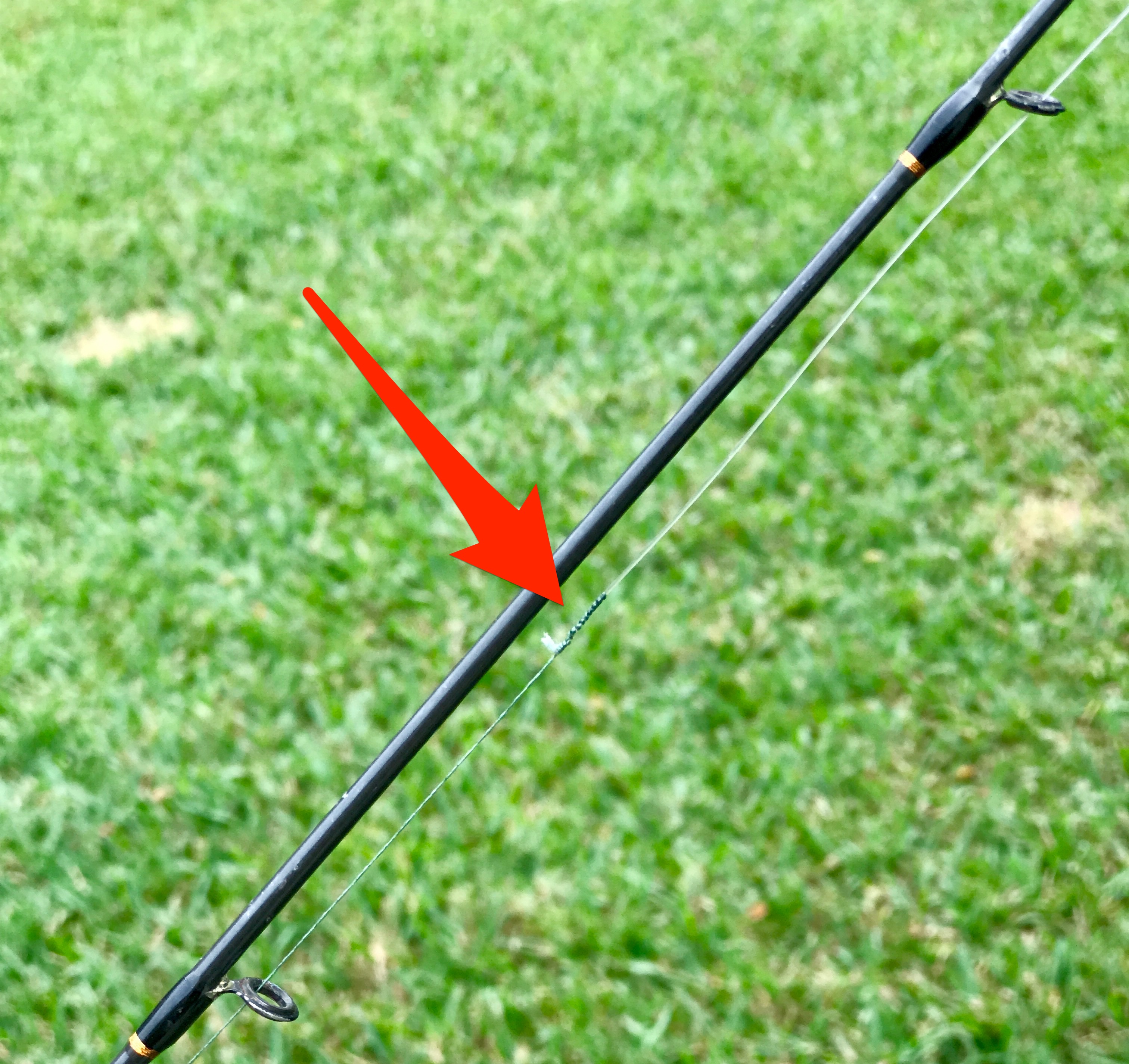
Casting the knot that connects your mainline to your leader through the guides on your rod is an overlooked cause of line tangles.
As that knot makes contact with the guides, the leader and braid behind it will suddenly start to slow down and the braided line behind it will catch up to it and overlap and tangle itself up.
To avoid this, make it a point to keep that knot past the rod tip before you make a cast.
Using an FG Knot will help minimize this problem since it is a very thin knot and passes through the guides more easily compared to a double uni knot.
You can see how to tie the FG Knot here – Quickest Way To Tie The FG Knot
Wind Knot Solution #3 – Avoid Casting Too Hard

Often we think that the harder we swing the rod, the further our lure will go, correct?
Incorrect.
Casting distance is achieved by technique, not brute force.
This causes your line to leave your spool much quicker but does not transfer that energy much past the rod tip, causing that inconsistency in line speed and line overlap and tangles.
If you are looking to up your game with casting, take a look at our Casting Course – See It Here
Wind Knot Solution #4 – Avoid Flimsy Rods
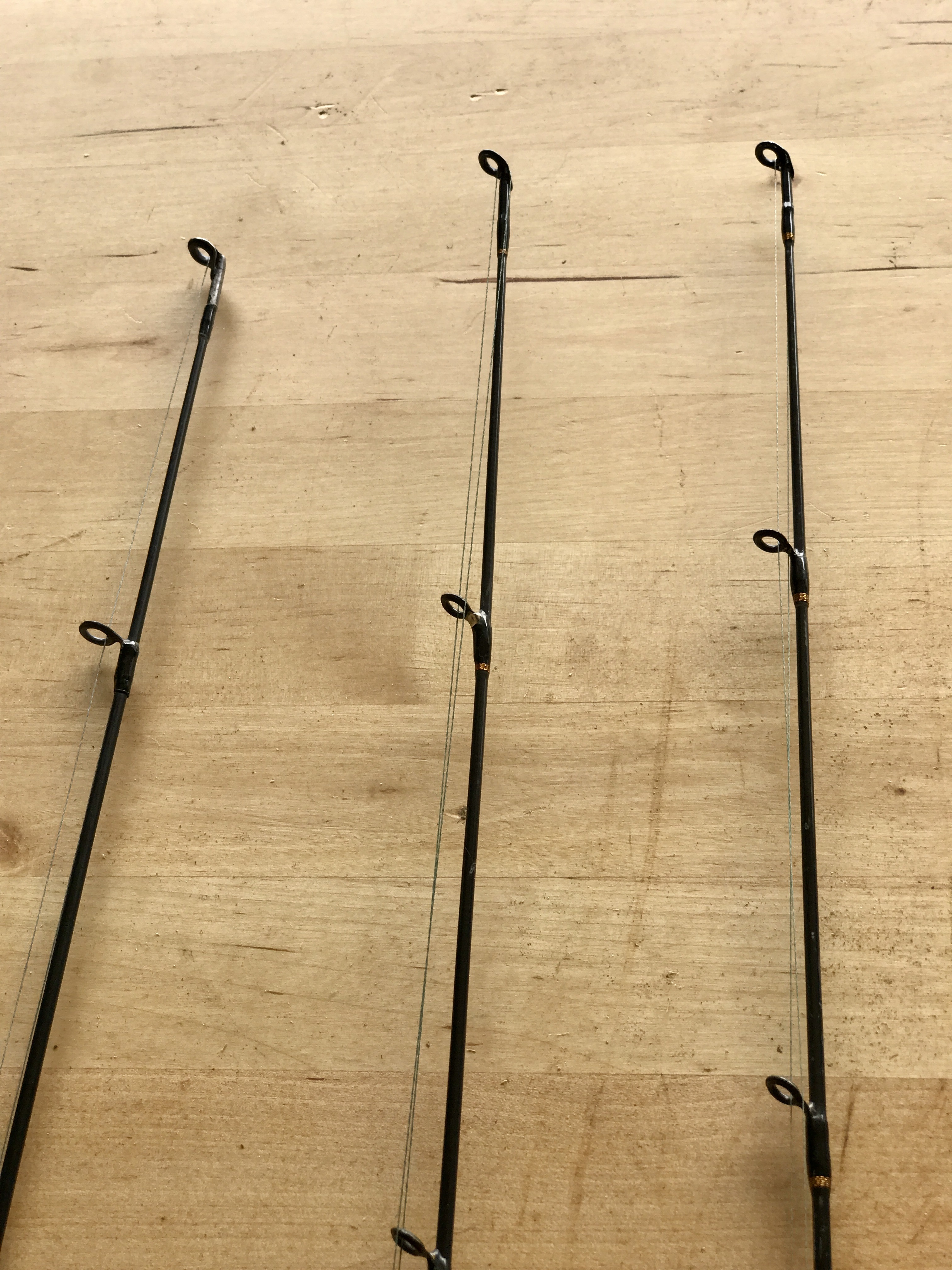
Your fishing rod can be an important player when it comes to avoiding and minimizing knots and tangles with braided fishing line.
From experience, I have had the most issues when using rods that have a flimsy rod tip.
This is the Action of the rod, not the Power.
A rod with a Fast or Extra Fast Action is what I like to use when casting braided line due to the rod tip being fairly stiff.
A lighter action means the rod tip is much more softer and flimsy, but there is no standard with rod manufacturers, so you have to judge based on your own testing of the rod.
With these rods, after you cast you will notice the rod tip continue to bounce up and down as your line is leaving the rod.
Just about every rod does this, but some are much more noticeable than others.
As the rod tip bounces, this also causes the line to bounce.
Going back to line speed, line traveling in a straight line (line in the guides) will be traveling faster than line that is bouncing and forming a wave shape past the rod tip.
Once again, you have yourself a situation with line catching up to itself, overlapping, and tangling up.
Wind Knot Solution #5 – Keep Tension on Your Line When Spooling or Retrieving

Slack fishing line is a big culprit when it comes to line tangles.
As you reel in slack line, this creates loose coils on your spool.
When you cast, these loose coils will come off the spool quickly compared to the line around it, causing the coils to overlap on themselves as they leave the reel and tangle up.
When spooling your line onto a reel, keep tension on the line with your fingers using a small towel or sock on your hand just above the reel.
You can even put some band-aids on your fingers instead of using a cloth to keep from burning or cutting your fingers up and keep tension on the line.
Keep your line tight as you retrieve your lure as well.
If there is too much slack line out, use your fingers to keep tension as you reel until the slack is gone and then begin your retrieve.
You can also pull your rod tip away to take the slack out, and then reel up the slack while you lower the rod tip which keeps tension on the line.
Wind Knot Solution #6 – Avoid Putting Too Much Line on Your Spool
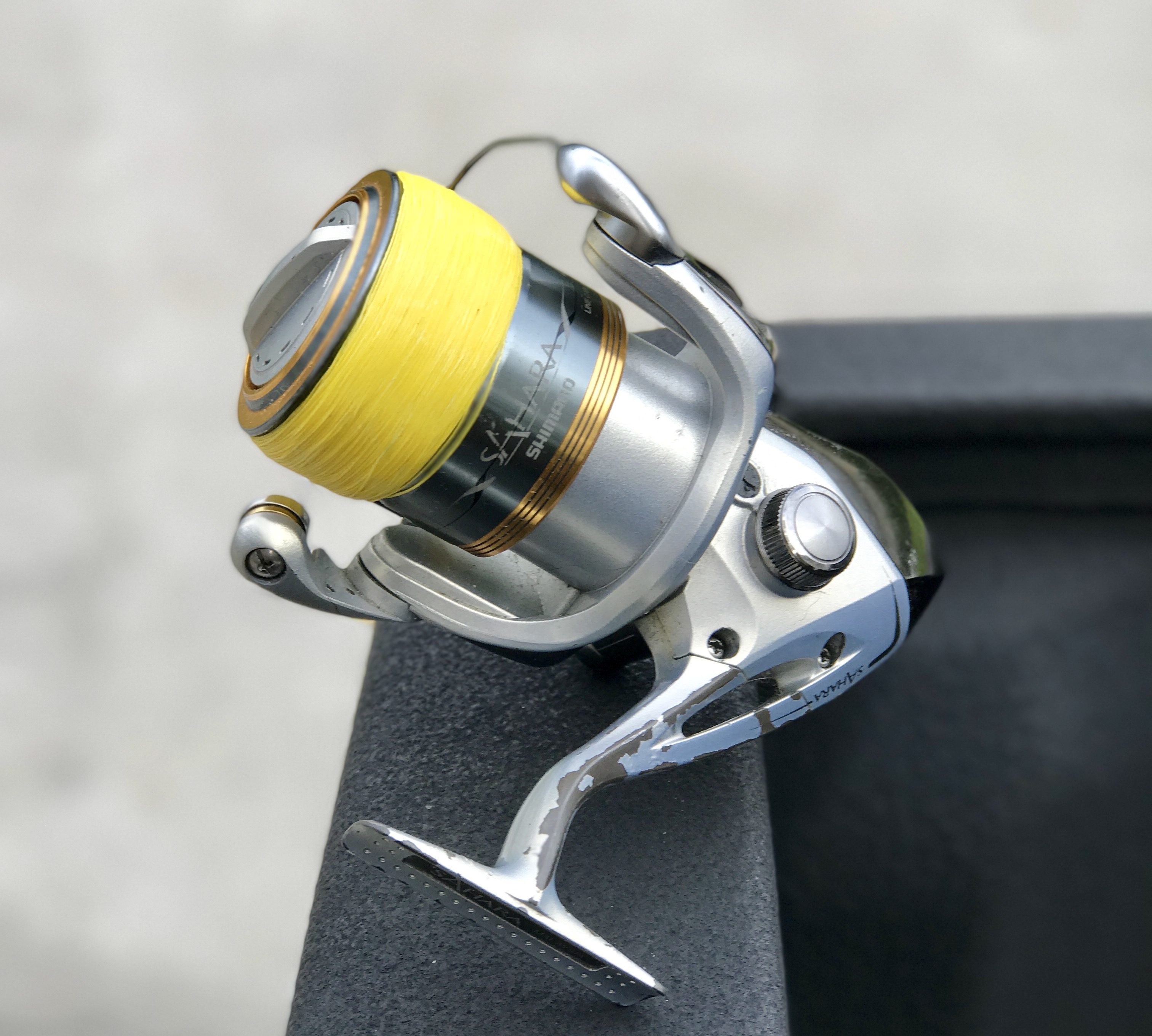
Another big mistake anglers make is filling up the spool of their reel to the edge with braided line.
This causes coils to literally fall off the spool when you cast.
When this happens, the coils overlap themselves and cause the knots and tangles.
Be sure to spool your line just shy of the edge of the spool, again being sure to keep tension as you spool the line on.
A simple trick to see if I have put too much line on is too open the bail, grab the line past the rod tip and give it a yank.
If line starts to fall off the spool after the pull, there is too much line on the spool.
Wind Knot Solution #7 – Take a Look at How Your Line Lays on Your Spool
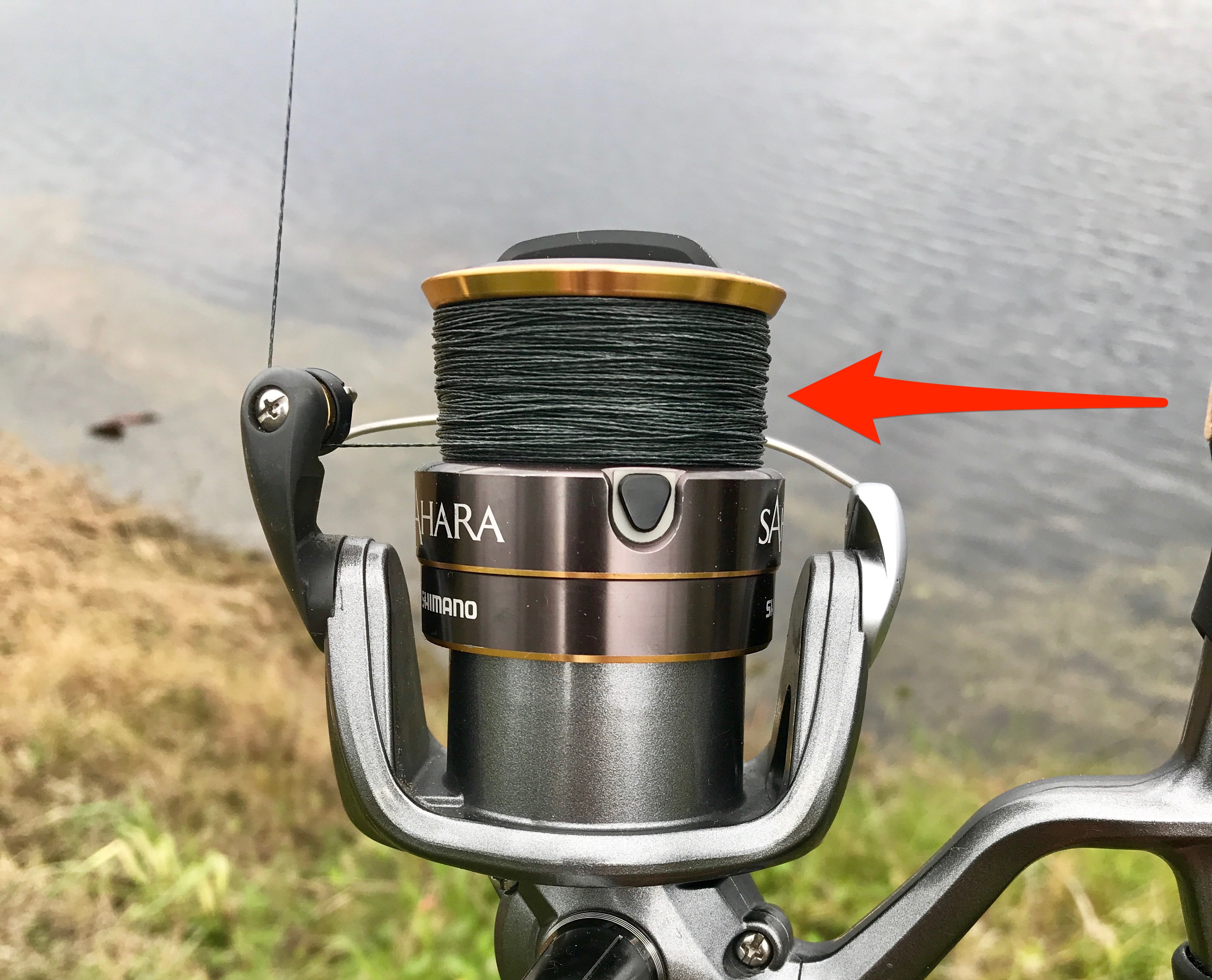
This goes hand in hand with spooling your reel.
Once your line is spooled up, take a look at how it is laying on the spool.
Is there more line at the top as opposed to the bottom?
Or is the line nice and even from top to bottom?
You want your line to be laying evenly on the spool.
If there is more line at the top of the spool or bottom of it, this will cause your line to leave the spool unevenly (large coils mixed with smaller coils) which causes line overlap and tangles.
This problem is due to the washers on the shaft that your spool sits on.
Check out this video to see how to correct this issue – How to Correct Uneven Line Lay
Wind Knot Solution #8 – Close the Bail by Hand

Notice I close the bail by hand and keep tension on the line with my index finger
When switching over to braided fishing line from using monofilament, it is important to break the habit of closing the bail by turning the handle of your reel.
You want to close the bail slowly by hand because this helps keep tension on the line as you close it.
When that bail snaps closed by turning the handle on the reel, this causes the line to bounce and form a loose coil on the spool.
Remember, loose coils are bad!
Wind Knot Solution #9 – Stop Your Cast By Hand
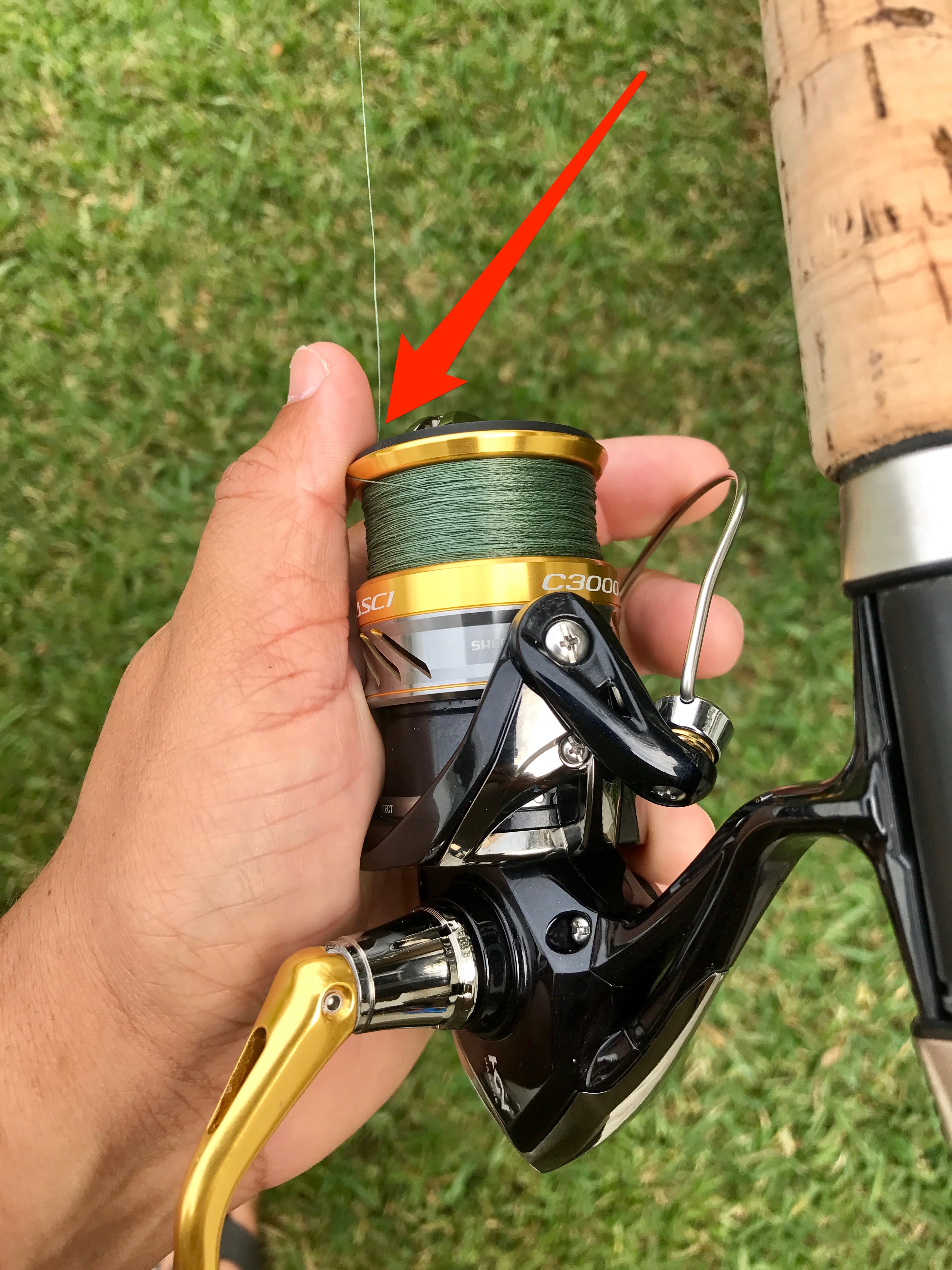
In addition to closing the bail of your reel by hand, it is also recommended to stop your line before the lure or bait hits the water.
I do this by simply putting my thumb of my free hand (the hand I use to turn the handle) on the top edge of the spool and slowly stop the line before my lure hits the water.
I then close the bail by hand and make sure the line is snug before starting my retrieve.
If you keep the bail open as your lure hits the water, your line is coming to a complete stop but line will continue to come off the spool.
This will usually cause loose coils to go onto the spool from slack in the line, and being in a hurry to reel up the slack after a cast.
Wind Knot Solution #10 – Avoid Rainbow Casting

A “rainbow cast” is where you lure or bait is cast high up in the air and your line forms a rainbow shape or curve.
This also happens when you cast into the wind, so you can pretty much see where this is going…..
Inconsistencies in line speed!
Not only does this decrease your casting distance, but it will also cause tangles in your line.
Avoid the rainbow cast!
Wind Knot Solution #11 – Avoid Using Heavy Leader with Light Lures
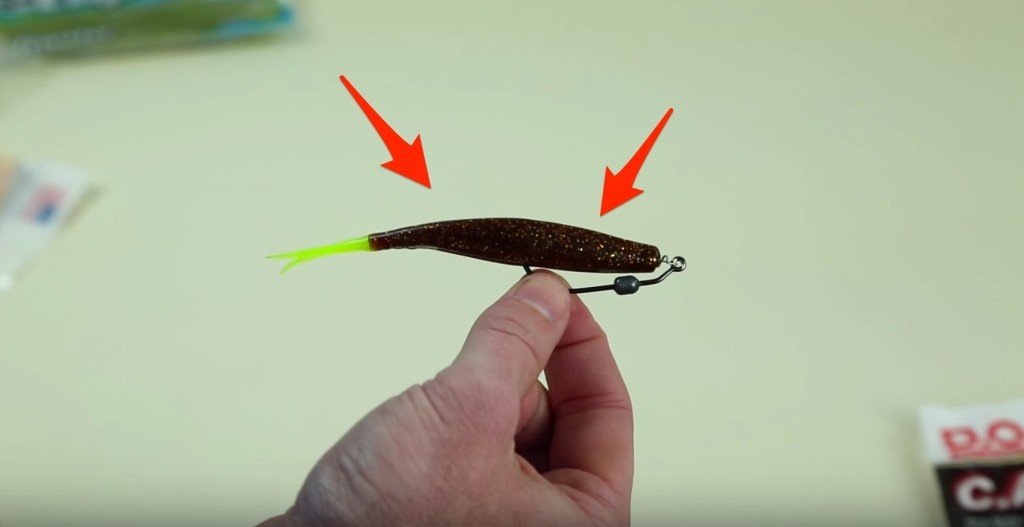
And yet again we have ourselves another line speed problem.
If you are using 10lb or 15lb braided line with 50 or 60lb leader and a 1/16oz hook or lure, you are going to have yourself some issues.
The biggest issue is due to the heavy leader.
This leader, with its larger diameter, has more resistance in the air.
This will cause your line speed to slow quickly once you cast, decreasing casting distance and also creating the dreaded tangles and knots in your braided line.
If you are using a heavier leader with a heavier lure, you may find this to be less of a problem due to the weight of the lure helping to keep your line moving.
Wind Knot Solution #12 – Proper Lure Rigging to Avoid Line Twist
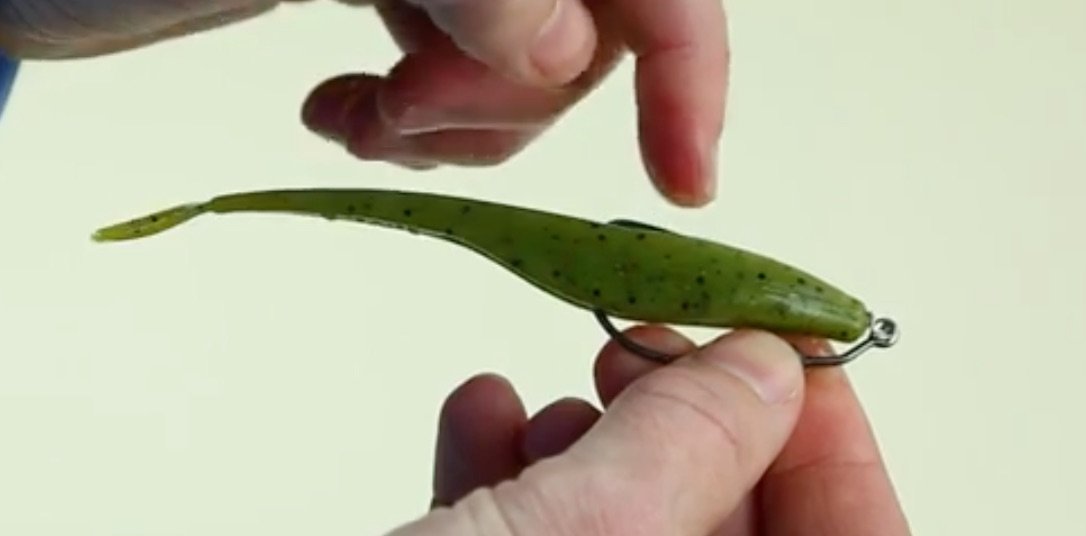
When using soft plastics, especially soft plastic jerk baits such as Gulp or Zman Jerk Shads, be sure they are rigged nice and straight.
This is done by making sure the hook is centered directly down the middle of the lure.
This keeps the lure from spinning and causing your line to twist up because these line twists can also cause knots and tangles in your braided line when you go to cast.
I recommend the Owner Weighted Twistlock Hooks because they have a centering pin on the spring, and the weight also helps keep the lure from spinning.
Here is a link to a video that shows how to properly rig Gulp Jerk Shads – See It Here
Also, here is a great video tip to remove line twist – Simple Trick to Remove Line Twist
Wind Knot Solution #13 – Point Your Rod Straight Out After Your Cast
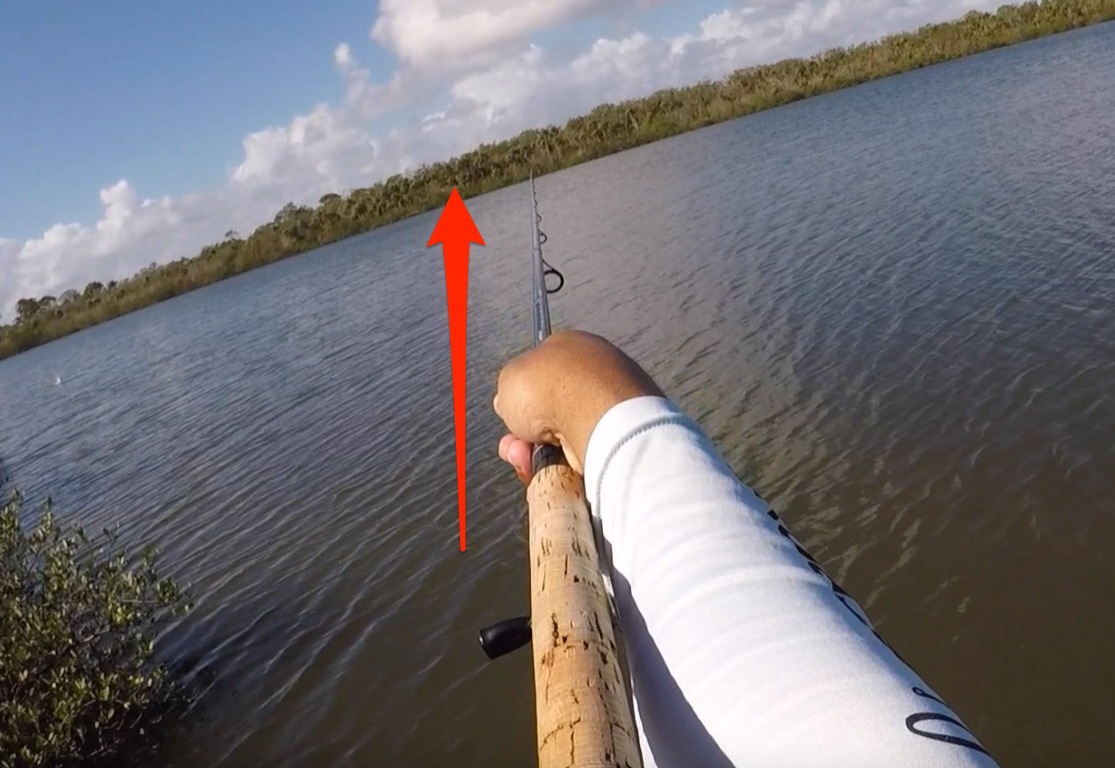
Line friction on the guides of your rod is also very important to consider to help reduce line tangles.
Again, this has to do with changes in line speed.
Less friction on your line as it leaves the spool will result in a slower, or gradual, decrease in line speed.
As mentioned before, if your line slows down quickly on a cast, those coils coming off the spool will catch up to each other and tangle up.
By simply pointing your rod tip straight out after you cast and before your lure hits the water, you are helping to reduce the friction of the line on the guides of the rod.
Wind Knot Solution #14 – Apply a Line Lubricant to Your Line

As a final tip to help with minimizing knots and tangles with your braided line, I like to apply a lubricant to my line after I put fresh line on a spool, and before every trip.
And no, I do not mean squeezing a bottle of reel oil onto your line
Real Magic is a great product I like to use as it is safe for braid and applies a thin lubricant to the line.
By doing this, it reduces friction as the line leaves the spool and passes through the guides, and also makes it a bit easier to get knots out if and when they do happen.
Conclusion

As you can see there are many variables that can cause your braided line to knot up when you cast.
It really comes down to one principle – Inconsistent and abrupt changes in line speed during your cast.
Many factors can cause this (as shown above) and be solved, but there is no 100% fix.
You can definitely minimize the risk of getting these knots by practicing the tips that are given.
It may seem like a lot, but over time it will become second nature if you practice these tips on a regular basis.
Do you have any extra tips to help prevent braided line knots and tangles?
Let us know in the comments!
Fish On!
Related Posts:
- How to Spool Braided Line on a Spinning Reel – See It Here
- How to Save Time and Money Spooling Braid onto a Spinning Reel – See It Here
P.S. – If you think your angler friends or fishing networks would like to see this, please Tag them or Share this with them.
Fish On!
Related categories:
STOP WASTING TIME ON THE WATER!
Do what the “SMART ANGLERS” are doing and join the Insider Club.
Here’s what you’ll receive today when you join:
- Weekly fishing reports and TRENDS revealing exactly where you should fish every trip
- Weekly “spot dissection” videos that walk you through all the best spots in your area
- Exclusive fishing tips from the PROS you can’t find anywhere else
- Everything you need to start catching fish more consistently (regardless if you fish out of a boat, kayak, or land).









If extreme accuracy is not required in your cast then simply increasing the length of drop outside the tip has dramatically reduced my wind knots over the years. I feel it results in a smoother initial acceleration of the lure and line as the rod recoils. With a bit of practice and patience, the accuracy is still pretty good even throwing at snags.
Great advice all round.
Got so frustrated went back to my old crush Cajun red …no more braided for me .. hate having meltdowns and 10 min cursing sessions while trying to relax
It can definitely be frustrating. But once you have the right equipment dialed in and understand the physics behind why the knots happen it can reduce the amount of issues. Braid is a game changer for casting and sensitivity. Also lasts much longer than mono (unless of course it tangles up and you gotta throw it out)
OMG Paulie, You made me laugh man! I’m glad I am not the only one having complete freakouts this year with my brand new rod and reel using braid. I just want to fish! …tangle after tangle impossible to sort out…..cut and retie over and over. This article helped a lot, I get it now. Thanks guys
Nice article. Helpful.
Thank you for the great feedback Jelani!
Berkeley original fireline does not wind knot. Give it a try. Better yet prove me wrong. There is a 20 mph wind today I put 10lb fireline on a rod and tried everything I couldn’t make it wind knot. Cast against the wind, rainbow casts, side arm, let it go loose, you name it. On Monday I put 20lb sufix braid on this rod and there was 17 mph winds. The 1st cast it wind knotted and did it probably 5 times more. I’m very good at the FG knot now. Anyway took that junk off put it on one of my surf rods and bought fireline. Go to Berkleys website read about fireline it is engineered for spinning rods. My shimano sycroplate reels are engineered to prevent wind knots. Power pro and sufix both wind knot bad. They are braided fibers. Fireline fibers are not braided together. Anyway this is what I found. Give it a try. Thanks jh
Good to know, thanks for sharing John!
Thanks for all the tips. I can see many of them that I do.#1 might be the best but as I live in Neb. that might be hard. The wind is always gusting. If I apply the rest,( some were a refresher by my fishing coach, fishing buddy, and my ex-husband. lol) Yes we still fish together. He just gets frustrated with my tangles. Birds nests. Can’t wait to apply. Thanks again.
You’re welcome Kim!
This was a good read. I have to say however I have avoided jerk bait on weighted hooks in the 1/16 to 1/8 oz class for literally a decade because I could NOT avoid wind knots. However today I decided to mix it up and use some. I just purchased a new reel and spooled it with 15lb braid. I must have had to cut off 50 yards in 15 minutes. I understand it’s new line and there might be a break it period, but I’m stumped as to how people seem to do a twitch twitch pause with a 5 inch jerk bait and a 1/8 oz weighted hook without getting wind knots. Gear: 15lb first use power pro. 6-12 St Ctoix. 2500 BG MQ. Alabama Lep with 1/8 oz Owner Twist Lock. Zero wind. I’m just getting loops or lose line on the spool between twitches. I try and make sure there is tension on the line between cranks but I feel like to do so its not in sync with the retrieve style.
Thank you for the great feedback Joseph!
The problem with jerk baits can be the retrieve as well due to periods of having slack and then tension in the line when doing a “twitch twitch pause”.
I’m probably the only one on the team that doesn’t use Diawa reels much. Whenever I do I always get wind knots for some reason. Switch over to my other reels and it rarely happens.
I rarely use anything but Shimano spinning reels anymore. I live and fish up in Wisconsin. I never get wind knots on my shimanos using powerpro, yozuri, J Braid, Suffix 832.. from 8lb to 20lb test . I took a trip to my dads in Florida. Bought the BG everybody talks about Spooled it with 20lb 832. Man, it wind knotted no matter what I did.
Likewise, I picked up a lews Carbon Fire reel for up north here. Put 10lb powerpro on it.. and nothing but knots.
I think line lay of various reels has a lot to do with how line comes off the reel. Shimano must have it right… or maybe I just cast correctly and do all the above right with a Shimano in my hands.
So I stick with Shimano.
All I currently use are shimanos. I have 2 Stradic FL’s and a Nasci FC. I rarely get any wind knots using them. I also have a Diawa Procyon and all I get are wind knots. I put heavier line on it (20lb) for dock fishing and it doesn’t seem to have any issues any more.
Thats interesting to hear Tony. What line did you put on the Daiwa to make the issue go away? Maybe my Suffix 832 line on my BG just wasn’t the right line. I left it in Florida at my dad’s house. He tried it and said he wanted to throw it to the sharks lol. Maybe I’ll have him spool something new on it. Or just sell it and buy a Shimano.
I went with 15lb original power pro. Seems like any 10lb line I used just didnt want to cooperate.
Wait, I actually have to READ! No video spoon feeding me. Outrageous! 😉😁Good info, Thanks!
Its good for the brain! Haha
If you have a wrap that is comes off of the spool for any reason.. take care of it first.. that loose wrap is a major mess waiting to happen with your very next cast.. if you can easily remove the spool from your reel and are not prone to lose parts… taking the spool off and peeling the line off down to the loose wrap from the back side of the spool will prevent another twist from being added to your problem with every wind of line that comes off of the spool..
in most cases that loose wrap starts when yo close the bail and start to reel with loose line. Get in the habit of checking that 1st wrap just as soon as you close the bail.
Great tip! Thank you!
Learned this the hard way today. My first time ever using braid in 30 years of fishing. Lost the entire 150y of braid in under an hour, due to wind knots. It was either a fish or a knot, sometimes both 😅. My anger makes me want to just go right back to old faithful (mono), but I felt the benefit of no stretch, particularly with the hard plastic lure I was using. I also acknowledge this is user error, so I’ll implement the tips in this blog. Thanks for the info!
P.s.
I definitely understand the science behind why braid would cast further. But I get some pretty good whip on my medium rod, and can cast mono a country mile with a heavy lure. That same casting technique was not yielding the distance with braid, and was definitely leading to knots. I’ll need to get used to a smoother cast. I’m curious to see if it ends up creating more distance as well.
Thank you for the great feedback Quinn! Depending on how flexible the medium power rod is, that could be leading to your wind knot issues. Some medium power rods are softer or stiffer than others of the same rating (varies from brand to brand). I get less wind knots with stiffer “snappy” rods.
Go back to mono…well that’s what I’m considering.
The conditions in Hawaii lends itself to casting into the wind and sometimes you don’t have a choice of going downwind….the fishes are waiting for me into the wind.
It was under windy conditions and casting (side arm) into the wind that cause some problems. I could still see the wind blowing the line into a nice curved configuration…perhaps I should have put the brakes on an straightened the line prior of lure hitting the water.
Well I lost one lure when the slowing of the lead end caused the looping of line around the spool and line snapped…lost my favorite Shimano lure.
I then thought it would be good to test my new tweaked Kastmaster (reflector tape, bucktail with tread teaser and ceramic red eye beads). I had it all visual and sound. Again casting into the wind the line looped around the third ring by the time I removed the wrap the lure settled down and got caught up and had lost lure.
Conducting a debriefing of what could have been done to reduce line speed issue and to enhance even and consistent spooling on the retrieve…gave way to thought of going back to mono. I am seriously considering this…sad.
I reviewed your article with a former angler (before the advent of braided line) and his response was “are you serious? I thought you gave up golf because you wanted something less stressful?”
Thank you for revealing the “dark side” of using braided line in windy conditions.
Does your rod have large guides on it? You want a rod with smaller guides so that it helps “choke” the line down. With how limp braid is compared to mono it likes to slap around a lot as it’s coming off the spool, and at times will catch the eyes. Once you have the right rod dialed in you really shouldn’t have many issues. I’ve learned all of this the hard way and just thought I would share to help others narrow down the issues.